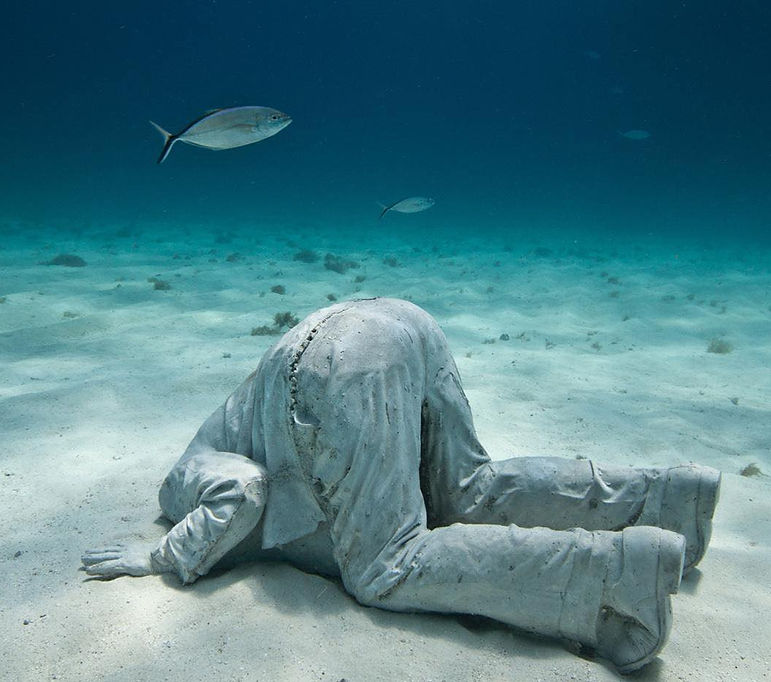
Lifting the Curtain on the Underwater World
Claudia Whaites
How connected is humanity to the water? How intricately do our lives relate to ocean life?
The sculptor Jason deCaires Taylor answers these generational questions through his underwater sculptures which encourage discussions regarding marine conservation and the symbiotic relationship between the human and natural world.
Jason is a world renowned sculptor who has recently opened an underwater museum in Cyprus, filled with underwater reefs and human figures in an attempt to renovate and restore marine life. His installations consist of pH neutral cement forms mirroring a popular Cyprus tree which become more enclosed as divers enter into the dense forest near to the sea bed. Coupled with this sense of reforestation, Jason has included human figures of both children and businessmen who are closely intertwined in a game of hide and seek, symbolising the power divide between politicians and the next generation. They are constructed from high-grade marine stainless steel which moves in motion with the currents, promoting an harmonious relationship between the two, thereby causing a diversion from the ocean’s previously attributed air of intimidation. These figurative shapes become hybrid sculptures, blurring the boundary between man and nature, whilst simultaneously alluding to the ever-changing binary of natural organisms. Through his collaboration with light refraction, these sculptures become rejuvenated and almost illusionary at the depths of the Mediterranean sea. Arriving closer to the pieces, one becomes aware of the variety of life forms beginning to thrive and become absorbed into the landscape. These artificial canopies and corals encourage shoals of fish as well as expanding films of algae to combine and create a euphoric overflowing sense of vitality, juxtaposed with tranquility.
In a talk with PADI diving, Jason comments on the devastating effects of climate change and environmental degradation in regards to coral bleaching and loss of biodiversity. When understanding local communities and their relationship to the oceans, he has repeatedly been told that he “should have seen this place 20 years ago” before the catastrophic modern-day wounds to the earth took place. Through his sculptural installations he is igniting his audience’s recognition for the beauty of nature and the necessity for its preservation. He is lifting the curtain on the underwater world, revealing its fragility and imperilled nature whilst disclosing its intracity with humanity. He encourages us to rewire and restore the marine sanctuary, looking back in twenty years and say we were able to make it better.
